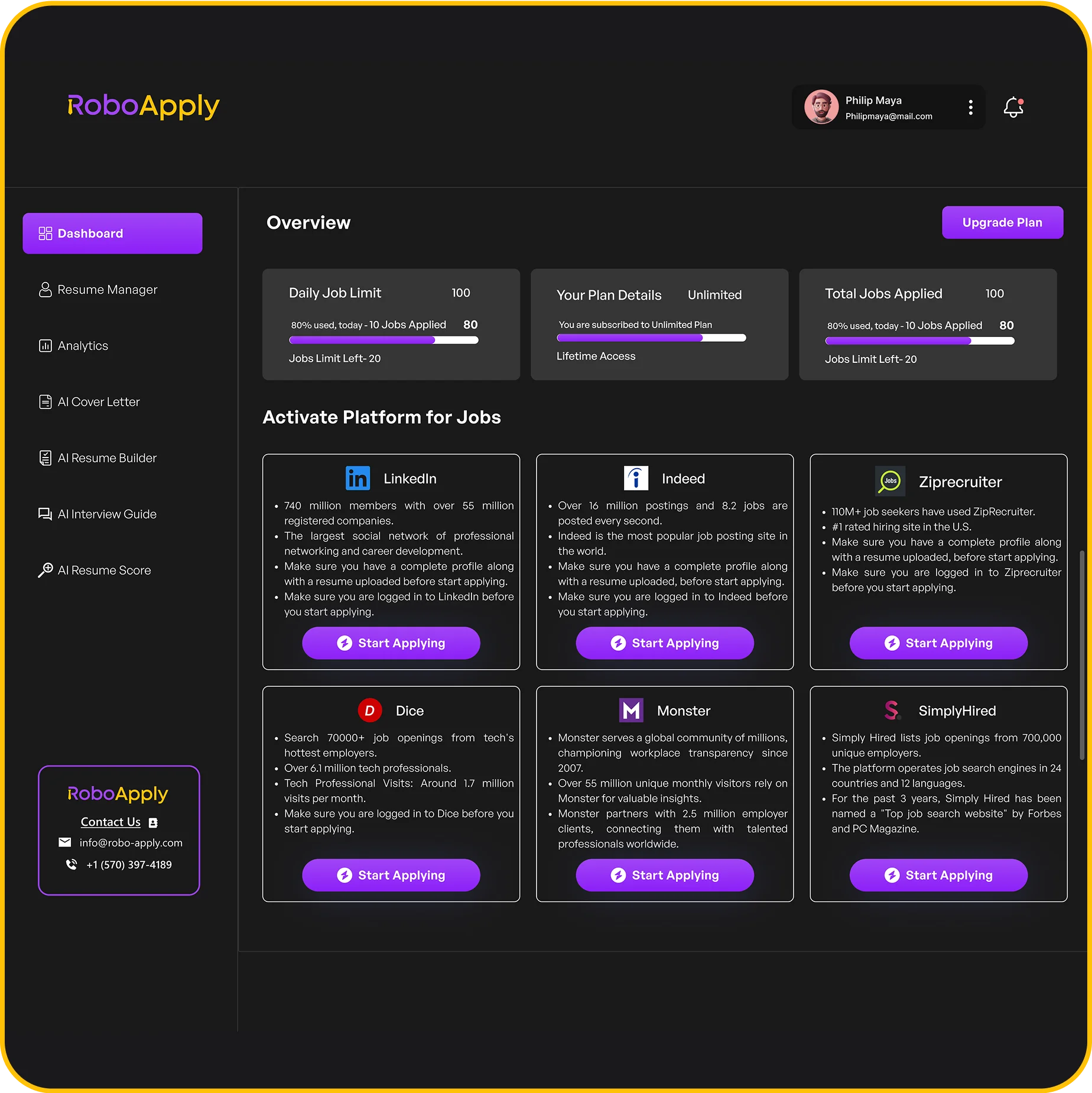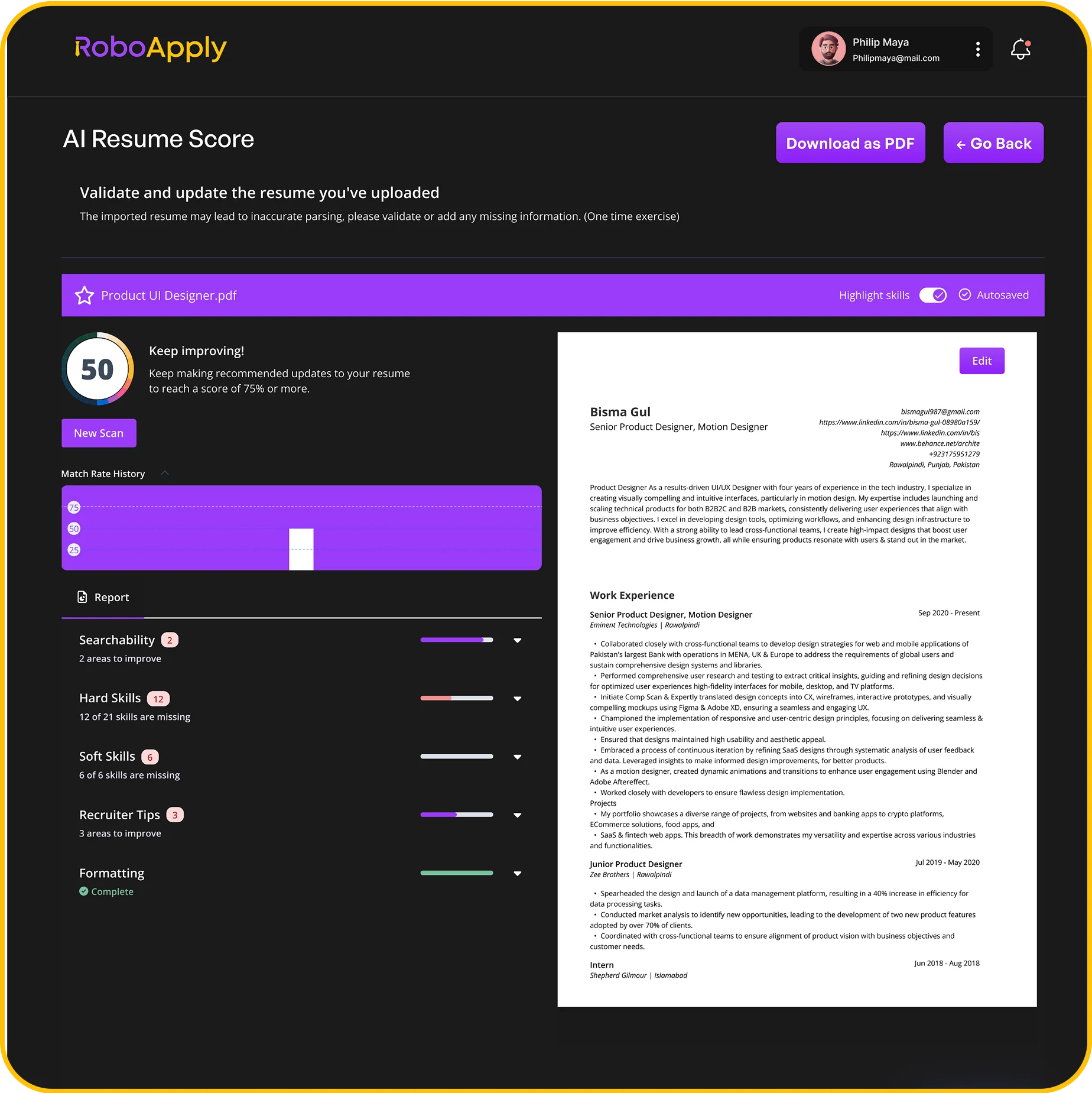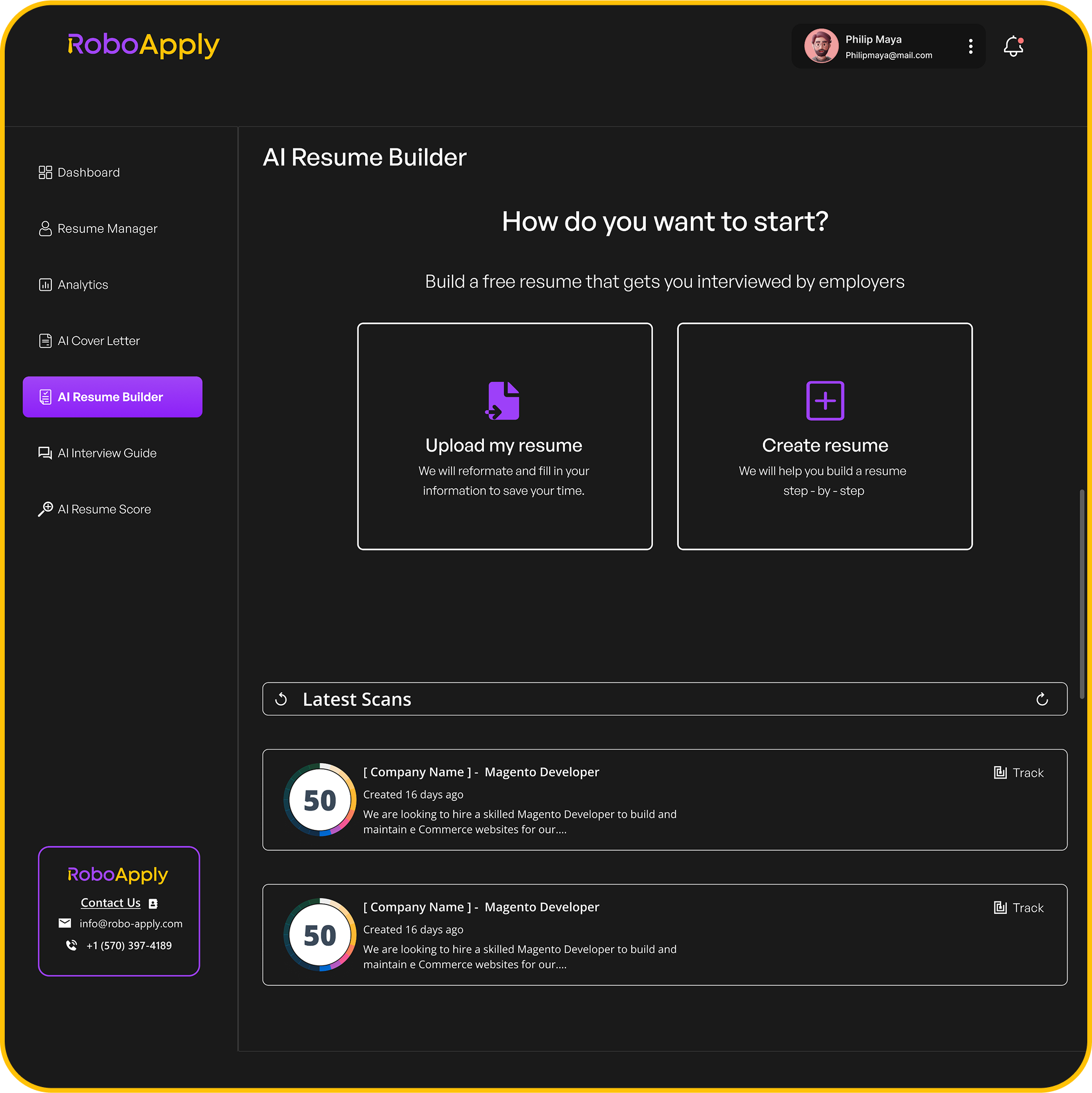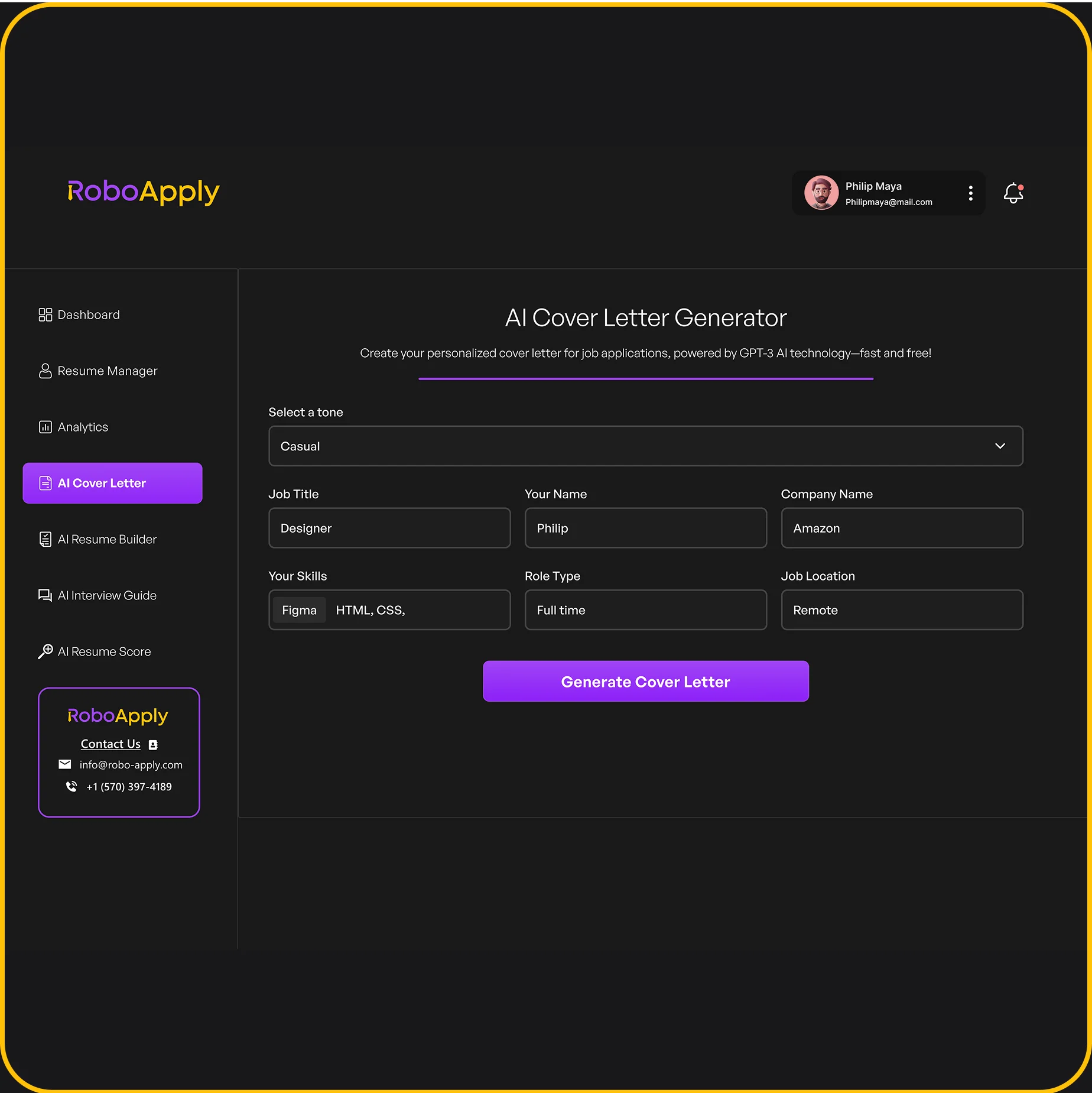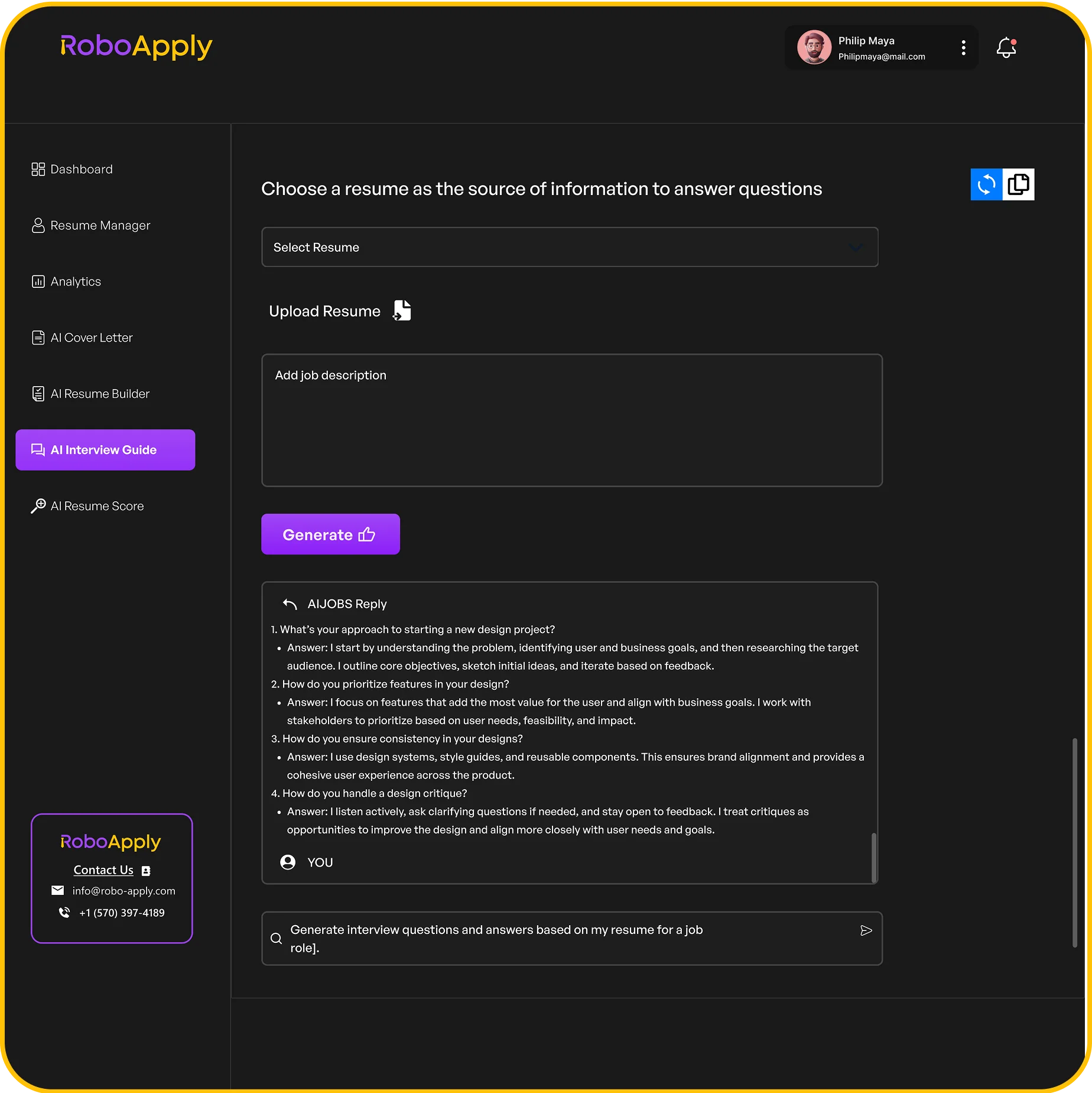Getting a job as an Early Childhood Teacher means showing off your skills and passion for working with young kids. Your resume is super important here. It’s your chance to make a good first impression and stand out from other applicants. We’re going to walk through how to make a strong Early Childhood Teacher Resume that gets noticed in 2025.
Key Takeaways
- Focus on achievements, not just duties, when listing work experience.
- Tailor your skills section to match the specific job description.
- Include relevant certifications and licenses to show you’re qualified.
- Quantify your accomplishments whenever you can, using numbers and data.
- Proofread everything carefully to avoid any mistakes.
1. Contact Information
Your contact information section is super important. It’s the first thing employers see, and you want to make it easy for them to reach out. Make sure everything is up-to-date and accurate. RoboApply can help ensure your contact details are consistent across all your application materials.
Here’s what to include:
- Full Name: Use a professional format (e.g., Jane Doe, not Janie Doe).
- Phone Number: Use a number where you can be easily reached.
- Email Address: Keep it professional (e.g., jane.doe@email.com, not partygirl123@email.com).
- LinkedIn Profile (Optional): If you have a well-maintained LinkedIn profile, include it. It’s a great way to showcase your professional experience professional experience.
- Address (Optional): You can include your city and state, but a full street address isn’t always necessary.
Keep this section clean and simple. Avoid using fancy fonts or colors that could make it hard to read. The goal is to make it as easy as possible for employers to contact you.
Here’s an example:
Jane Doe
(555) 123-4567
jane.doe@email.com
LinkedIn: linkedin.com/in/janedoe
Make sure to double-check everything before you submit your resume! A small mistake here could cost you an interview. You want to make a good first impression, and that starts with accurate contact information. Think of it as your digital handshake. You want it to be firm, friendly, and error-free. A well-crafted resume, including a clear contact section, is key to landing a kindergarten teacher assistant role in 2025 kindergarten teacher assistant.
2. Resume Summary
A resume summary is like your elevator pitch on paper. It’s a short paragraph at the top of your resume that tells the hiring manager who you are, what you do, and why they should hire you. Think of it as a highlight reel of your best skills and experiences. RoboApply can help you fine-tune this section to make sure it’s both grammatically correct and optimized for applicant tracking systems (ATS).
- Keep it brief: Aim for 3-4 sentences max.
- Tailor it: Change it for each job you apply for.
- Focus on achievements: Use numbers to show your impact.
A good summary can really make you stand out. It’s your chance to grab the reader’s attention right away and show them why you’re the perfect fit for the job. Don’t waste this opportunity with generic statements.
Here’s an example:
Enthusiastic and dedicated Early Childhood Teacher with 5+ years of experience fostering a fun and stimulating learning environment. Proven ability to develop engaging lesson plans that cater to diverse learning styles. Seeking to enhance student success at ABC Preschool by implementing innovative teaching strategies and promoting a positive classroom culture.
Another example:
Caring and patient Early Childhood Teacher with a passion for nurturing young minds. Skilled in creating a safe and supportive classroom where children can thrive. Eager to join XYZ Daycare and contribute to their mission of providing high-quality early education through effective resume summaries.
3. Work Experience
Your work experience section is where you really show what you’ve got. It’s not just a list of jobs; it’s a showcase of your skills and accomplishments. Think of it as your chance to prove you’re the right person for the job. RoboApply can help you tailor this section to match the specific requirements of each job you apply for, making sure your most relevant experiences shine.
Here’s how to make it count:
- Start with your most recent job and work backward. This is the standard format that recruiters expect.
- Use action verbs to describe your responsibilities and achievements. Instead of "Responsible for," try "Managed," "Developed," or "Implemented."
- Quantify your accomplishments whenever possible. Numbers speak louder than words. For example, "Improved student engagement by 15%" is much more impactful than "Improved student engagement."
Remember, this section is about more than just listing what you did. It’s about showing how well you did it and the impact you had. Tailor each description to match the job requirements, highlighting the skills and experiences that are most relevant.
Here’s an example of what a good entry might look like:
Lead Teacher | Sunshine Daycare | 2022 – Present
- Developed and implemented age-appropriate curriculum for 20+ preschoolers, focusing on social-emotional learning and early literacy skills.
- Managed classroom activities, ensuring a safe and stimulating environment for all children.
- Collaborated with parents to provide individualized support and address developmental needs.
- Improved student engagement scores by 20% through the introduction of interactive learning games.
Think about using a tool like RoboApply to help you customize your teacher resume examples for each application. It can really make a difference.
Another example:
Assistant Teacher | Little Explorers Academy | 2020 – 2022
- Assisted lead teacher in planning and implementing daily activities for toddlers.
- Provided one-on-one support to children with special needs, adapting activities to meet their individual requirements.
- Maintained a clean and organized classroom environment, ensuring the safety and well-being of all children.
- Contributed to the development of new learning materials, enhancing the overall quality of the program.
When describing your work experience, focus on the impact you made in each role. What did you achieve? How did you contribute to the success of the program? These are the questions that recruiters want answered. Remember to tailor your resume to each specific job, highlighting the experiences and skills that are most relevant. For more ideas, check out these professor resume examples to see how educators highlight their experience.
Also, consider adding a bullet point that highlights your use of technology in the classroom. This could include using educational apps, creating online learning resources, or implementing virtual field trips. In today’s world, technology skills are highly valued in early childhood education. Don’t forget to check out preschool teacher resume examples for more inspiration.
4. Education
Your education section is super important. It shows employers you have the necessary qualifications to teach young children. Make sure it’s clear and easy to read. RoboApply can help you format this section consistently across all your applications.
Here’s how you might format it:
- Degree Type: (e.g., Bachelor of Arts in Early Childhood Education)
- Major: (e.g., Early Childhood Education)
- University Name: (e.g., University of Example)
- Graduation Date: (e.g., May 2025)
- GPA: (Optional, but include if it’s high, like 3.5 or above)
Don’t forget to include any relevant coursework or specializations. For example, if you focused on special education or bilingual education, make sure to highlight that. This can really make your early childhood educator resume stand out.
Here’s an example:
Bachelor of Arts in Early Childhood Education
University of Example, May 2025
GPA: 3.8
Relevant Coursework: Child Development, Curriculum Design, Special Education
5. Certifications and Licenses
This section is where you show off all those important pieces of paper that prove you’re qualified to work with young children. Make sure to list everything relevant, and don’t forget expiration dates if applicable. RoboApply can help you keep track of these dates so you never miss a renewal!
Here’s how you might format it:
- Child Development Associate (CDA) Credential – Expires 08/2026
- First Aid/CPR/AED Certification – American Red Cross – Expires 03/2027
- State Teaching License (Early Childhood Education) – Valid through 06/2028
- Food Handler’s Permit – Expires 12/2025
It’s a good idea to include the issuing organization for each certification. This adds credibility and makes it easier for employers to verify your credentials. Plus, it shows you’re serious about your professional development.
Listing your teaching certifications is a great way to show you’re qualified. It’s like saying, "Hey, I’ve got the skills and knowledge to do this job well!" Don’t leave them off!
6. Skills
Your skills section is where you show off what you’re good at. It’s not just about listing things; it’s about showing you have the right skills for the job. Think about what the job description asks for and make sure those skills are front and center. RoboApply can help you tailor your resume to match job descriptions, making sure you highlight the most relevant skills.
Hard Skills
These are the teachable abilities you’ve gained through education or experience. For an early childhood teacher, these might include:
- Curriculum Development: Creating lesson plans and activities that are age-appropriate and engaging. It’s important to show you can design learning experiences. EdTech proficiency is a plus.
- Child Safety Knowledge: Knowing how to keep children safe, including first aid and emergency procedures. This is non-negotiable.
- Assessment Abilities: Evaluating children’s progress and identifying areas where they need extra help. This shows you’re attentive to individual needs.
- Classroom Management: Keeping a classroom organized and running smoothly. This is key to a productive learning environment.
Soft Skills
Soft skills are your people skills, and they’re just as important as hard skills. Here are some essential soft skills for early childhood teachers:
- Communication: Being able to talk to children, parents, and colleagues clearly and effectively. This is probably the most important skill.
- Patience: Dealing with challenging behaviors and situations calmly and constructively. It’s a must-have.
- Creativity: Coming up with new and exciting ways to engage children in learning. Think outside the box.
- Empathy: Understanding and responding to children’s emotions and needs. It shows you care.
Technical Skills
In today’s world, tech skills are becoming increasingly important, even for early childhood teachers. Here are some examples:
- Educational Software: Using programs like ABCmouse or Starfall to enhance learning. Resume skills in this area are valuable.
- Basic Computer Skills: Being able to use email, word processing, and other basic computer functions. It’s a given, but still important.
- Interactive Whiteboard: Using interactive whiteboards to create engaging lessons. This shows you’re up-to-date with technology.
- Online Communication Tools: Using platforms like Zoom or Google Meet to communicate with parents and colleagues. Especially relevant in a hybrid world.
It’s a good idea to list both hard and soft skills on your resume. Try to include a mix of both, and tailor your skills section to match the specific job you’re applying for. Don’t just list skills; show how you’ve used them in your previous roles.
How to List Skills
There are a few different ways to list your skills on your resume. You can use a simple list, or you can group your skills into categories. Here’s an example of how you might list your skills:
- Skills
- Curriculum Development
- Child Safety Knowledge
- Assessment Abilities
- Classroom Management
- Communication
- Patience
- Creativity
- Empathy
- Educational Software
- Basic Computer Skills
- Interactive Whiteboard
- Online Communication Tools
Or, you could group them like this:
- Core Competencies
- Curriculum Development
- Classroom Management
- Interpersonal Skills
- Communication
- Patience
- Empathy
- Technical Proficiencies
- Educational Software
- Interactive Whiteboard
No matter how you choose to list your skills, make sure they’re easy to read and understand. And remember to tailor your skills section to match the job description. A one-page resume should highlight the most relevant skills.
7. Awards and Recognition
Listing awards and recognition on your early childhood teacher resume can really make you stand out. It shows you’ve gone above and beyond, and that your work has been acknowledged by others. It’s a great way to highlight your achievements and demonstrate your commitment to excellence in early childhood education. RoboApply can help you tailor this section to match specific job requirements.
This section is where you showcase any formal acknowledgements of your skills and dedication.
Here’s how you can approach it:
- Be Specific: Don’t just say "Teacher of the Year." Include the year, the organization that gave the award, and a brief description of why you received it.
- Quantify When Possible: If the award was based on student performance, mention the improvement in scores or other relevant metrics.
- Relevance Matters: Focus on awards that directly relate to early childhood education or demonstrate skills relevant to the job you’re applying for.
Including awards and recognition can significantly boost your resume, but make sure they are relevant and presented in a clear, concise manner. It’s about showing, not just telling, that you’re an exceptional educator.
Here’s an example:
- Excellence in Early Childhood Education Award – Sunshine Learning Center, 2024
- Recognized for creating an innovative curriculum that improved student engagement by 30%.
- Teacher of the Month – Little Explorers Academy, March 2023
- Awarded for outstanding dedication to student development and parent communication.
- Community Service Award – Local YMCA, 2022
- Honored for volunteering time to organize and lead children’s activities during summer programs.
8. Volunteer Experience
Volunteer work? Yeah, it’s not just for filling time. It shows you’re dedicated, caring, and have skills that transfer to the classroom. Plus, it makes you look good to potential employers. RoboApply can help you highlight these experiences effectively.
Example Entry
Here’s how you might format a volunteer experience on your resume:
Lead Story Time Volunteer | Sunshine Shelter | 2022 – Present
- Organized and led weekly story time sessions for children aged 3-5, promoting literacy and social interaction.
- Developed engaging activities and crafts related to the stories, fostering creativity and imagination.
- Managed a group of up to 15 children, ensuring a safe and positive environment.
- Collaborated with shelter staff to identify and address the specific needs of the children.
Why It Matters
Volunteer experience shows you’re not just about the paycheck. It demonstrates a commitment to children and a willingness to go the extra mile. It can also fill gaps in your work history or provide relevant experience if you’re just starting out. Think about it – have you ever:
- Volunteered at a daycare?
- Helped with a children’s program at your church or community center?
- Tutored kids in reading or math?
Even seemingly small volunteer roles can showcase valuable skills like patience, communication, and leadership. Make sure to quantify your impact whenever possible. For example, instead of saying "Helped with after-school program," say "Assisted with an after-school program serving 30+ students, improving their reading scores by 15%."
Tips for Listing Volunteer Work
- Treat it like a job. Include the organization’s name, your role, and the dates of your involvement.
- Use action verbs to describe your responsibilities and accomplishments. Think "organized," "led," "developed," and "managed."
- Tailor your descriptions to match the requirements of the early childhood teacher position you’re applying for. Highlight the skills and experiences that are most relevant. For example, if the job description emphasizes creativity, focus on the creative activities you developed during your volunteer work.
- Don’t be afraid to include volunteer work even if it’s not directly related to childcare. Any experience that demonstrates your work ethic, teamwork skills, or commitment to helping others can be valuable. For example, volunteering at a soup kitchen shows that you’re compassionate and willing to work hard. You can use a preschool teacher resume to showcase your volunteer experience.
9. Professional Development
Keeping your skills sharp is super important, especially in early childhood education. Showing you’re committed to professional development on your resume tells employers you’re serious about your job and staying up-to-date with the best practices. It’s not just about listing workshops; it’s about showing how you’ve grown and what you’ve learned. RoboApply can help you organize this section to highlight the most relevant training for each job you apply for.
Here’s how you can approach it:
- List relevant workshops and conferences: Include the name of the event, the date, and the organization that hosted it. For example, "Positive Behavioral Interventions and Supports (PBIS) Training, July 2024, State Department of Education."
- Mention any specialized training: Did you get certified in a specific teaching method like Montessori or Reggio Emilia? List it! "Certified in Montessori Method, American Montessori Society, 2023."
- Include continuing education courses: If you’ve taken college courses or online classes related to early childhood education, add them. "Child Development Course, University of Online, Spring 2024."
Think of this section as a way to show you’re always learning and growing. It’s not just about attending events; it’s about how those experiences have made you a better teacher. Tailor this section to match the specific requirements of the preschool teacher resume you’re targeting.
Here’s an example of how it might look on your resume:
Professional Development
- Conferences:
- National Association for the Education of Young Children (NAEYC) Annual Conference, November 2024
- Workshops:
- "Creating Inclusive Classrooms," Early Childhood Education Center, August 2024
- Certifications:
- CPR and First Aid Certified, American Red Cross, Expires June 2026
Remember to keep it concise and relevant. Focus on the training that directly relates to the job you’re applying for. This shows employers you’re not just meeting the minimum requirements, but actively seeking ways to improve your skills and knowledge. You can use an AI resume builder to help you format this section effectively and ensure it aligns with the rest of your resume. It’s all about making a strong impression and showing you’re a dedicated professional. Tailoring your resume to each job application, as discussed in the 2025 resume examples, can significantly increase your chances of getting an interview.
10. References
It used to be standard to include "References available upon request" at the end of your resume. These days, it’s generally understood that you’ll provide references if an employer asks. However, if you have amazing references lined up and ready to go, you might consider including them directly on your resume, especially if they’re well-known in the field.
Think about it: a glowing reference from a respected figure could really set you apart. Just make sure you’ve asked for their permission first!
Here’s what to keep in mind:
- Always ask permission: Never list someone as a reference without their explicit consent. They need to be prepared to speak about you.
- Provide complete information: Include their name, title, place of employment, phone number, and email address.
- Choose wisely: Select references who can speak directly to your skills and experience as an early childhood teacher. A former supervisor or mentor is ideal.
Listing references directly can save time during the hiring process and show you’re prepared. RoboApply can help you keep track of your references and tailor them to each application, making the process smoother. For example, you can use RoboApply for faster job applications to keep track of your references.
11. Portfolio
Okay, so you’ve got your resume all polished up, but what about showing off your actual work? That’s where a portfolio comes in. It’s like a visual resume, letting potential employers see what you can do. Think of it as your chance to really shine and go beyond just listing your skills. RoboApply can help you tailor your portfolio content to match specific job requirements, ensuring your best work is always front and center.
What to Include
- Photos of classroom setups: Before-and-after shots can be super effective. Show how you transformed a space into a stimulating learning environment. I remember one time, I completely reorganized a reading corner, and the kids were so much more engaged. It’s those kinds of transformations that really stand out.
- Lesson plans: Include a few of your best lesson plans. Make sure they’re well-organized and easy to read. Highlight the learning objectives and how you assessed student understanding. It’s a great way to show your planning skills.
- Student artwork: With permission, of course, showcase some of the amazing artwork your students have created. It demonstrates your ability to inspire creativity and foster a positive learning environment. I always loved displaying student work; it made the classroom feel so much more vibrant.
- Letters of recommendation: If you have any glowing letters of recommendation, include them! They add credibility to your claims and provide external validation of your skills and abilities. These are gold!
Digital vs. Physical
Deciding whether to go digital or physical depends on the job and your personal preference. A digital portfolio is great for online applications and can be easily shared. A physical portfolio is nice for in-person interviews, allowing you to walk through your work. I’ve found that having both is the best approach. You can even include a QR code on your early childhood educator resume that links to your online portfolio.
Tips for Creating a Strong Portfolio
- Keep it updated: Regularly update your portfolio with your latest and greatest work. Stale content doesn’t make a good impression.
- Tailor it to the job: Customize your portfolio to match the specific requirements of each job you apply for. Highlight the projects and experiences that are most relevant.
- Get feedback: Ask colleagues or mentors to review your portfolio and provide constructive criticism. A fresh pair of eyes can catch things you might have missed.
A well-crafted portfolio can significantly increase your chances of landing your dream job. It’s a powerful tool that allows you to showcase your skills, experience, and passion for early childhood education. Don’t underestimate its importance!
Example Portfolio Layout
Here’s a simple example of how you might structure your portfolio:
- Cover Page: Your name, contact information, and a brief introduction.
- Table of Contents: Make it easy for viewers to navigate your portfolio.
- Classroom Setup Photos: Before-and-after shots with brief descriptions.
- Lesson Plans: A selection of your best lesson plans, highlighting learning objectives and assessment methods.
- Student Artwork: A gallery of student artwork with appropriate permissions.
- Letters of Recommendation: Scanned copies of your letters of recommendation.
- Professional Development: Certificates or documentation of relevant professional development activities. This is especially important for nursing student resume and other healthcare roles.
Showcasing Skills
Your portfolio is a great place to showcase specific skills that might not be fully captured in your resume. For example, if you’re skilled in using technology in the classroom, include examples of how you’ve integrated technology into your lessons. Or, if you’re particularly good at creating inclusive learning environments, showcase projects that demonstrate your commitment to diversity and inclusion. Think about how your skills translate into tangible results. For example, if you’re applying for an English teacher resume, include examples of student writing you’ve helped improve.
Want to see what we’ve built? Check out our work and see how we help people get jobs faster. You can find lots of cool stuff there.
Conclusion
So, there you have it. Getting your early childhood teacher resume just right can feel like a big job, but it’s totally doable. Think of it as your chance to show off all the good things you bring to the classroom. Make sure your resume is clear, easy to read, and really highlights what makes you a great fit for working with young kids. A good resume can open doors, so take your time with it. You’ve got this.
Frequently Asked Questions
How can I make my resume stand out?
It’s super important to make your resume easy to read. Use clear headings and bullet points. Keep your sentences short and to the point. Think about what a busy boss would want to see first.
Should I list my work experience in a specific order?
You should always list your most recent jobs first. This helps the person reading your resume see your latest skills and experiences right away.
Do certifications and licenses really matter?
Yes, you should definitely include any special training or courses you’ve taken, especially if they’re about early childhood education. This shows you’re serious about your job and always learning new things.
What exactly is a resume summary?
A resume summary is like a quick, catchy introduction at the top of your resume. It tells the employer who you are, what you’re good at, and what you’re looking for, all in a few sentences.
Should I put awards on my resume?
It’s a great idea to include a section for awards or special thanks you’ve received. It shows that others recognize your hard work and talent.
Is volunteer experience important to list?
Yes, volunteer work can be very helpful on a resume, especially if it’s related to working with kids or in an educational setting. It shows your dedication and passion.
How long should my resume be?
Keep your resume to one page if you’re just starting out or have less than 10 years of experience. If you have a lot more experience, two pages can be fine. The main thing is to keep it clear and not too long.
Should I include a portfolio with my application?
While not always needed, having a portfolio can be a huge plus. It lets you show off examples of your work, like lesson plans or projects, which can really impress potential employers.











